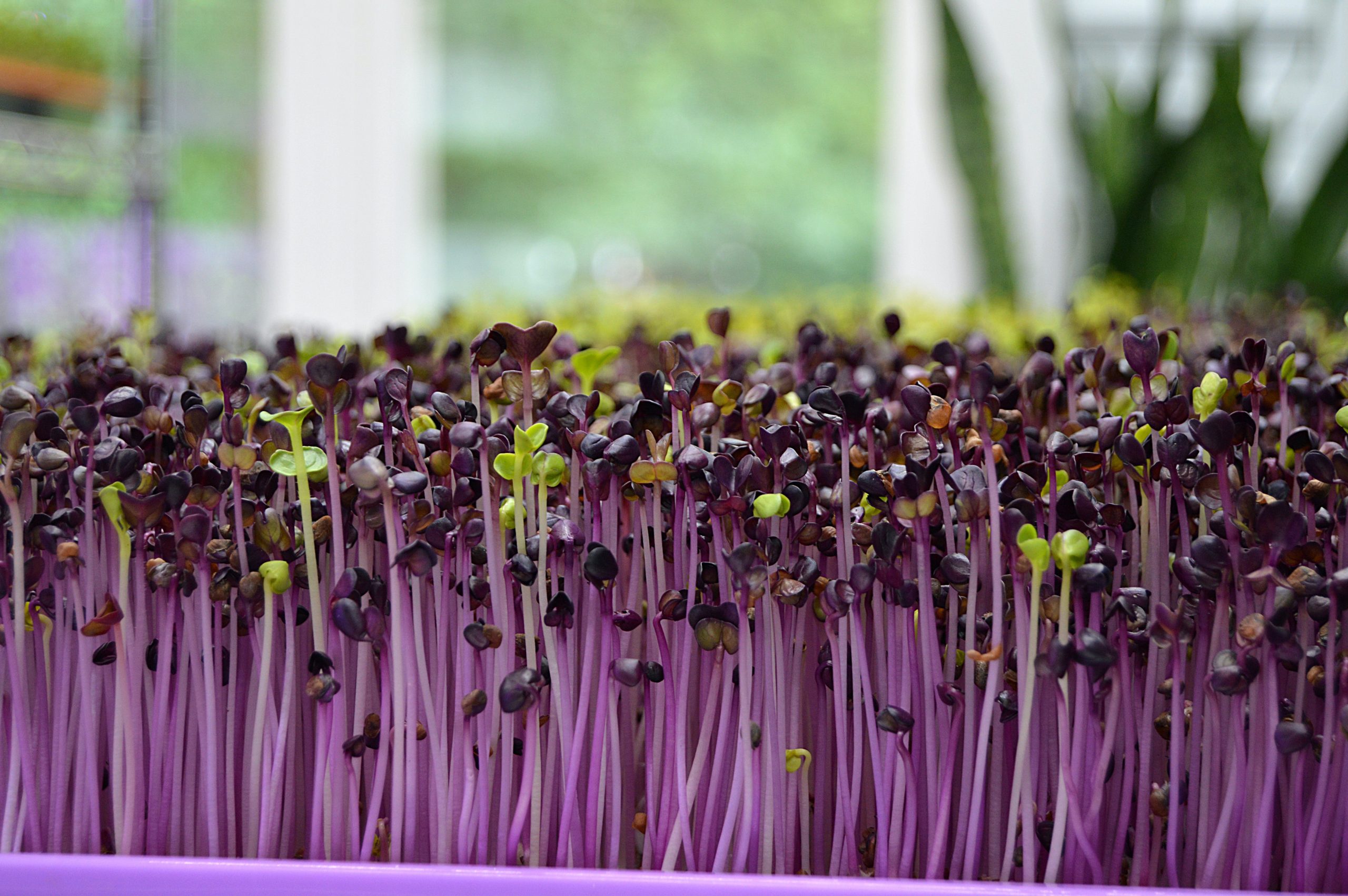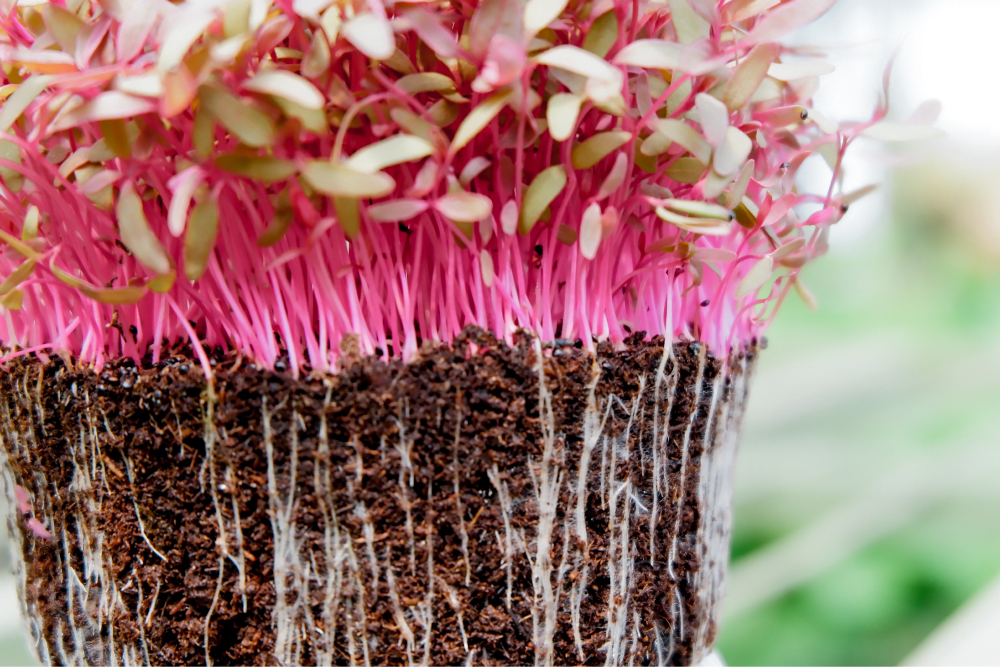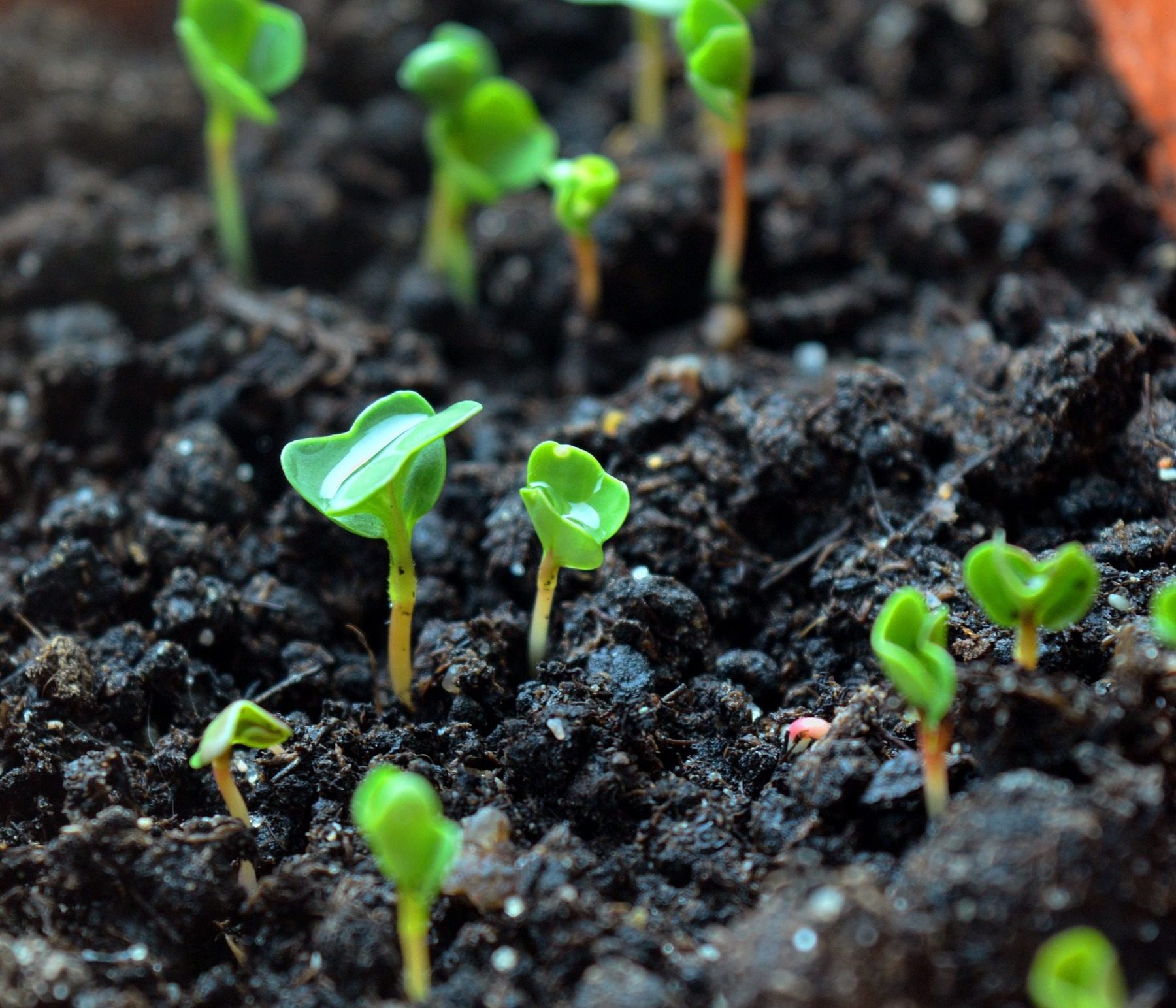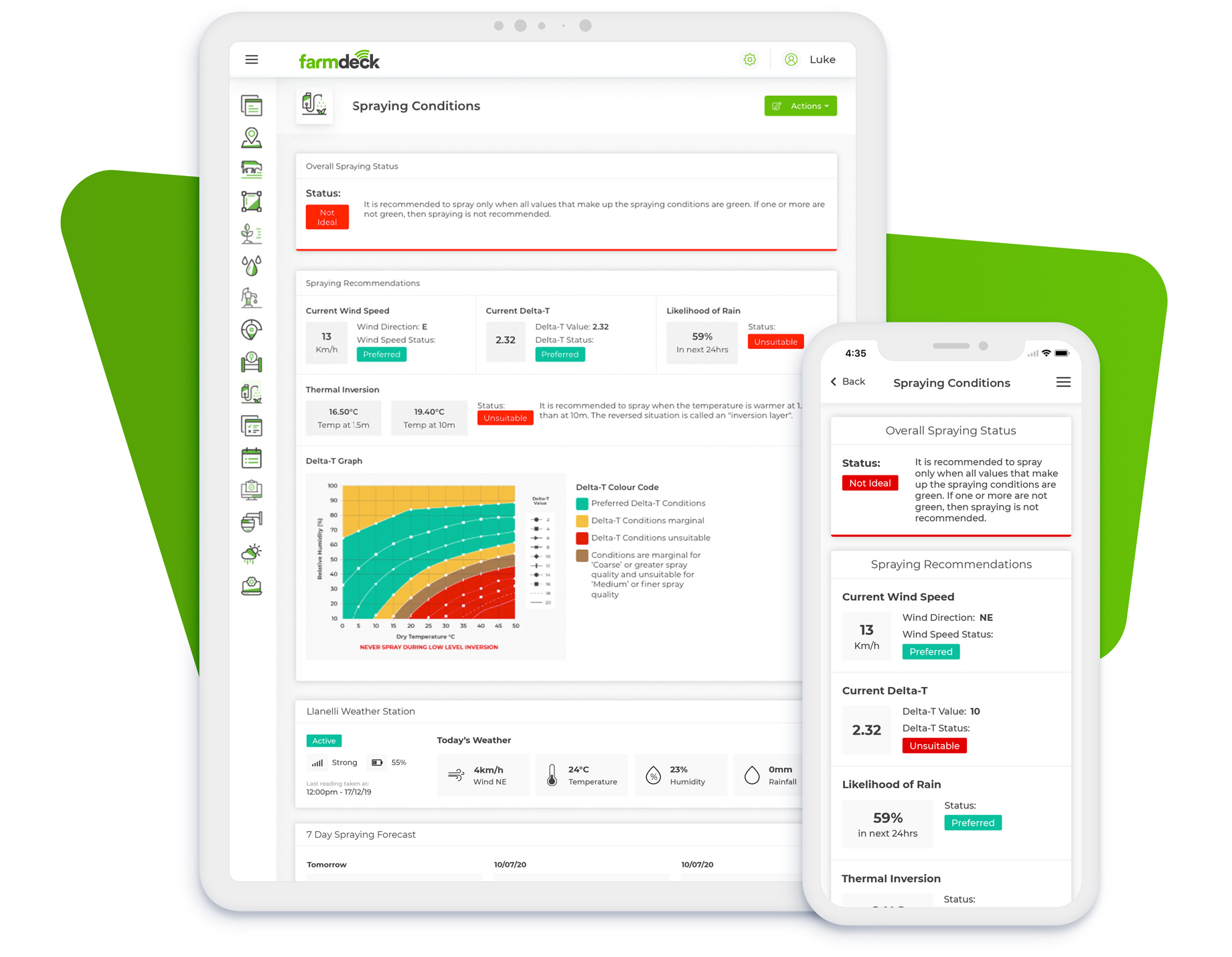The low cost, nutrient-dense superfood
Microgreens possess similar health benefits that sprouts provide but have an even greater nutritional value. According to the Journal of Agricultural and Food Chemistry, microgreens can have up to 40% more nutrients in comparison to their mature counterparts. This is due to the microgreen’s cotyledon leaves, the first leaves to appear from a germinating seed, possessing higher nutritional densities compared to the nutritional concentrations in mature leaves.
Originally grown for use in restaurants as garnishes, microgreens have increased in popularity and are gaining demand in a variety of markets due to their health benefits and the rise of the health-conscious consumer. The most commonly grown microgreens include arugula, broccoli, cauliflower, peas, and radish. What makes these nutrient-packed powerhouses so ideal is that they can be grown from a variety of different seeds. Microgreens are grown similarly to regular plants but harvested when the germinated seeds of plants have tiny roots, and their first leaves appear. While they may appear visually similar to sprouts, microgreens are not eaten whole, and they are separated from their roots for consumption.
Since microgreens can be grown indoors by anyone, they are growing steadily in popularity. It prevents microgreens from being affected by external factors that damage traditional crops, such as drought, soil erosion and pollution. Microgreens do, however, require light and can be grown using soil or by using hydroponics. Growing microgreens also has the added benefit of a lower start-up cost compared to traditional farming by requiring less land. By growing microgreens on trays, they can be stacked to maximise the use of vertical space. If you want to learn more about maximising space for crops, check out our vertical farming blog.
A growing industry
The microgreen industry is expected to grow rapidly. Here are three key insights into the industry which we have included below.

Industry growth
Microgreens are a rapidly growing industry. The global microgreens market size is projected to grow from $1, 417.64 million in 2020 to reach $3, 795.47 million by 2028. With an expected compound annual growth rate of 13.1% and the Asia Pacific as the fastest-growing market for microgreens, it is a prime moment for Australian farmers to be a part of the rising demand for microgreens.
Leading microgreen
Broccoli currently holds the most significant share of the global microgreen market. This is due to it being one of the fastest-growing microgreens and possessing healthier and nutritious qualities. Growing broccoli can be a great entry point due to existing market demand, however, it is important to consider the level of competition and demands of other plants too.
Alternative customers
The microgreen industry is also growing due to manufacturing. Microgreens are being processed into oils and ingredients used for personal care items and skincare products. This can be attributed to microgreens containing a lot of Vitamin A & B, as well as many other micro-elements. Supplying a personal care or skincare manufacturer can be useful to look into when considering diversifying your microgreen customer base.
Benefits of growing microgreens
Below we discuss four of the benefits of growing microgreens, before explaining how you can get started growing your own.

Higher nutrition
Microgreens pack a punch. As a superfood, it contains up to 40% more nutrients than its mature counterparts. It can appeal to restaurants as garnishes and high-end ingredients, as well as to health-conscious consumers as part of the main meal.
Fast turnaround time
Microgreens have a fast turnaround time: they are grown from a seed and are ready to harvest in as little as one week, or four weeks at most. Some experimentation on your part will be needed to find what optimises growth for your production line. Don’t be afraid to play around.
Year-round growing
Microgreens are one of the only few ways that you can produce food year-round. It can be a great consistent source of income or an additional source to diversify your business.
High value
Microgreens can be sold at high prices to top restaurants and food stores. It is a niche product and best when fresh, meaning a premium price can be charged as a local producer.
How to get started
Always research the seeds before you grow them. If you are not purely growing microgreens for yourselves, you need to determine if there is a market demand for the specific microgreens and find out whether they may be harmful or not. For example, the leaves from the nightshade family, like tomatoes, potatoes and eggplants are toxic, so they shouldn’t be grown as microgreens. Popular microgreens are grown from the following families:
- Amaranthaceae: quinoa, beet, and spinach
- Amaryllidaceae: garlic, onion, leak
- Apiaceae: dill, carrot, fennel, and celery
- Asteraceae: lettuce
- Brassicaceae: cauliflower, broccoli, cabbage, and radish
- Cucurbitaceae: melon, cucumber, and squash
It is also important to note that some seeds may be treated with fungicides or pesticides. The treatment on these seeds will break down by the time the plant has matured, but it still may be present in the short period that microgreens sprout. Similarly, seeds sold as spices may be irradiated to eliminate pests, these impacts ripening and germination so they would not be suitable for microgreen growth. It would be best to purchase seeds that are branded as made specifically for microgreens.

After finding the seeds you want, growing microgreens can be simple.
A dozen flat trays can be grown each week, requiring only 15 to 30 minutes every couple of days. A bit of extra time would be required for harvesting and selling, but it provides an additional source of income.
You can also scale your microgreen operation and receive a proportionate return based on the time put in. Microgreens can turn into a full-time operation depending on how much you want to produce.
On a commercial level, there are a few resources required to grow consistent batches over the long term:
- Seeds of your preferred plant
- Potting soil
- Flat trays with drainage holes
- Fluorescent light fixtures to maintain optimal lighting
- Timers to keep lights on and off during certain times
- Spray bottle to keep seeds from drying out during germination and to keep microgreens moist as they grow
- Watering can with a fine spout to water when the microgreens get larger
- A small fan to keep crops well ventilated to prevent mould
- Paper towels to put over seeds when you start
- Scale to measure the microgreens for packaging
- Good pair of scissors to harvest

How Farmdeck can support your agricultural growth
With a range of features available, we can help with the adoption of technology to suit your agricultural needs.
Engage in safer spraying and be certain with our Spraying Conditions feature:
- Gain better visibility on weather conditions in real-time
- Analyse spraying conditions such as wind speed, the likelihood of rain, Delta-T and thermal inversion
- Keep records of weather conditions when spraying automatically
Reach out to us and discuss how we can simplify your farm management experience with our IoT features to create a seamless experience.
